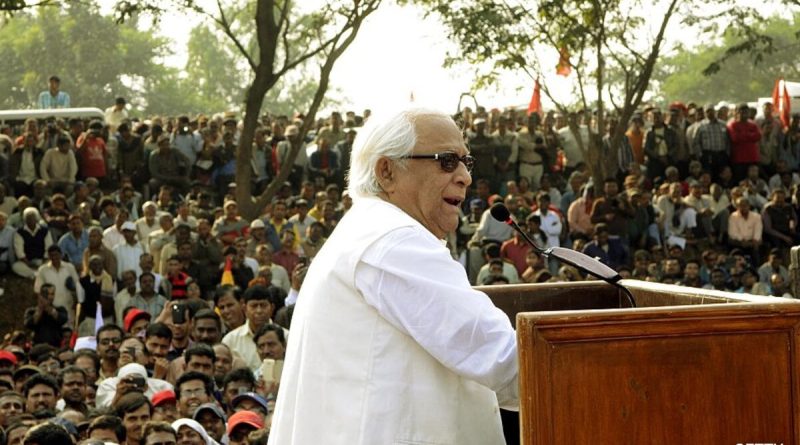Buddhadeb Bhattacharjee: The Man Who Attempted to Reverse the Chaos in Bengal, But Was Ultimately Too Late
New Delhi:
On February 4, 2019, sadness settled over the iconic Brigade Parade grounds in the center of Kolkata. Kanhaiya Kumar, then a passionate Left leader known for his inspiring speeches, had called off his visit to a rally just before the upcoming Lok Sabha election.
As disheartened Left supporters began leaving the dusty grounds, an announcement from the stage halted them. A wave of enthusiasm swept through the crowd, seldom seen at a Left rally since their embarrassing 2011 loss in West Bengal.
In a car somewhere nearby sat a pale Buddhadeb Bhattacharjee, in his usual white kurta, on oxygen assistance. Despite remaining in the car due to his multiple health issues, news of his presence was sufficient to energize the rally attendees.
The loud cheers that resonated through the city that day encapsulate the symbol that Buddhadeb Bhattacharjee – Buddha Babu – represented in Bengal politics. The former chief minister passed away at 80 on Thursday.
He was most recognized as the Leftist who did not waver on progress regardless of his party’s beliefs.
However, history will be harsh on Buddhadeb Bhattacharjee. He will be remembered as the final Left chief minister of West Bengal, who guided the party to a defeat from which it never recovered. Throughout his nearly four decades in active politics, he witnessed the ascent and descent of Communists in Bengal.
A stalwart of Left politics in India, he secured his first election victory in 1977, the same year his party assumed power, from the Cossipore constituency of north Kolkata. In his initial term as MLA, he was assigned the Ministry of Information and Culture.
He lost the subsequent election but made a comeback in 1987 after moving to the Jadavpur constituency.
In 2000, when Jyoti Basu opted to step down due to health reasons after 23 years in power, Buddhadeb Bhattacharjee stepped into the shoes of his mentor, commencing a new era of Left politics.
In the 2001 Bengal polls, Mr. Bhattacharjee secured a resounding mandate, with the Left capturing 196 of 295 seats. The seat allocation was significantly higher than in previous elections, but the opposition had shifted. Instead of the Congress, his closest adversary was former Congress member Mamata Banerjee, whose Trinamool Congress had achieved an impressive 60 seats.
The brick-red Writers building, which functioned as the state secretariat at that time, would not remain the Left’s fortress for long.
Since the 1970s, the Left’s grip on Bengal appeared unshakeable.
Bhattacharjee faced his greatest challenge during the Singur and Nandigram uprisings that ultimately led to his government’s downfall. Both controversies were associated with accusations of compulsory land acquisition by the government for development projects – something that the Left had vehemently opposed for three decades.
Reflecting on his mentor Jyoti Basu, Derek Brown of The Guardian had once remarked that the “communist rule has deprived Kolkata of the new prosperity visible in other centers such as Delhi and Mumbai”. Bhattacharjee aimed to rectify precisely that. He valued progressiveness.
Bengal witnessed swift industrialization during his final years as chief minister. Data indicates he had guided the state to the fourth position in terms of industrial growth during his concluding years in power.
However, it was too belated.
While Mamata Banerjee’s 25-day hunger strike in Singur established her as a formidable leader who would safeguard the farmers’ rights, indiscriminate police intervention on protestors resulting in the deaths of 14 demonstrators significantly diminished the likelihood of the Left making a comeback to power.
2011 marked the conclusion of Left governance in West Bengal, and Bhattacharjee faded away from active politics.
The defeat was humiliating for Bhattacharjee, who quietly retreated from the limelight, although he claimed to have never disengaged from public life.
Fast forward to 2019, he honored his pledge. To canvass for his party prior to the Lok Sabha elections, he revisited the Brigade Parade grounds, albeit on oxygen assistance, inside a car. The crowds were jubilant, but the voters had turned indifferent to the Left.
In two more years, his party would be eradicated from the state assembly.
Waiting for response to load…

